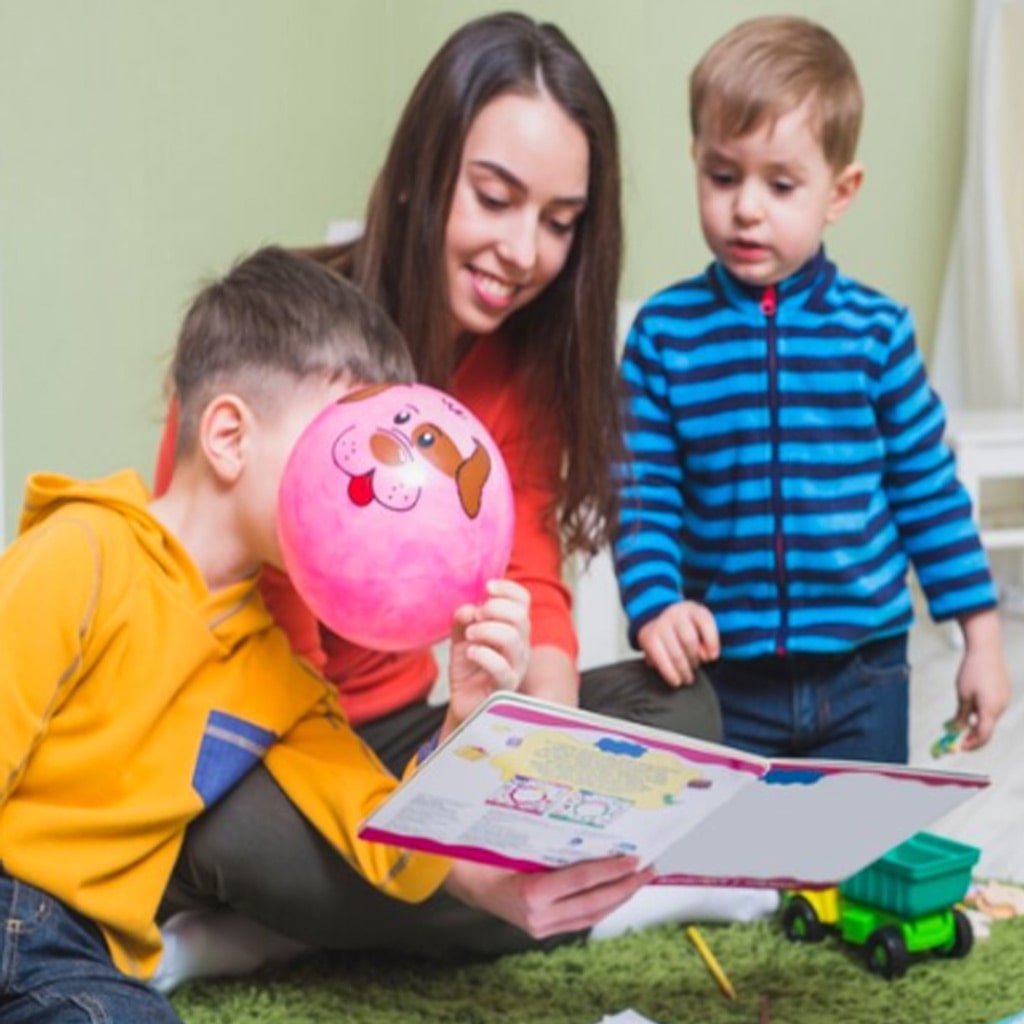

Please enter the code we just sent to whatsapp 91-11-46710500 to proceed
Didn't Receive OTP?

Most importantly, by having exciting games and hands-on learning experiences, supporting that child’s interests. That’s why we nurture preschoolers’ awe – you will hear that word a lot in Montessori circles – an innate sense of discovery and curiosity by setting up provocations where a child needs help.
Health and life sciences
Cognitive and intellectual skills
Language and artistic literacy
Arithmetic
Science and hands-on experiments
Fine and gross motor skills
You need to choose a kindergarten carefully. It is important. So you need to research pretty well because it lays the foundation of the future for your child and will base his/her school on it.
Social life for four-year-old toddlers.
Use different behaviors: They know and share their behaviors. I teach meditation and yoga.
Knowledge: Promotes understanding and acquisition of knowledge.
Courteousness: Respect and share resources conscientiously.
Liable Use: Take care of school supplies cautiously and honor clean-up time.
Emotional Control: Introduced to meditation as well as yoga.
Assisting Roles: Class helper roles are engaged in by them.
Emotional Development/Cognitive Skills:
Information Filtering: Problem-solving, learning skills, attention, memory, language processing, and decision-making.
Knowledge: Comprehension and acquisition of knowledge are supported.
Recognizing Emotions: Clip charts are tools for identifying feelings.
Memory: Soaking up information, ensuring that it has been stored; memory involves both the taking in and recalling of data or sensations that we experience.
Coping Skills: Tools for effectively handling emotions
Problem-Solving: Confident decision-making can be fostered through problem-solving activities
Vision Boards: Aid children to recognize their dreams and happiness.
Read more: Educational Pathways in India: Traditional, Homeschooling, and Unschooling
Social life skills for toddlers:
They articulate their own needs.
They are empathetic towards others.
Can manage their personal needs, such as - going independently to the washroom, zipping, buttoning up, etc.
Can make friends and have healthy interactions with peers.
Can express themselves effectively and recognize their feelings and emotions.
They exhibit in expressing positive behavior which includes sharing space and resources with peers.
They use the school supplies responsibly and respect clean-up time.
They have been introduced to various strategies to regulate their emotions like meditation, yoga, etc.
They fulfill supportive roles in the classroom like helping assistant jobs.
Learning: Cognitive facilitates learning new skills, understanding, and acquiring knowledge.
Recognizing Facial Expressions and Body Language: One way to encourage feelings is to give a visual reference to use. I think that by using a clip chart learners can distinguish their emotions. Are these ‘clips’ simply a chart of faces all lookin’ different: sad, happy, angry, mad, bored, frustrated, impatient, or can they be so much more?
Memory: Memory involves the absorption of information and facilitating it.
Coping with extreme emotions: Kids have a roller coaster of emotions and we must be able to recognize and deal with them effectively. Emotions can rise high and then it is easy to lose the line, with many tools available to restore peace on the waving emotions.
Problem-solving and decision-making can help children become confident and boost cognitive skills as well. Those considering them can be provided with choices to evaluate the ramifications and hence tap into their reasoning abilities.
Create a vision board for emotions: Vision boards are a success in every field. It should help children understand what is important to them and the objectives they are striving for. This also alleviates the tendency to have a negative attitude towards things.
Alphabet Bin: Sensory play sparks excitement and makes learning fun in toddlers. One set of activities that can indeed be fascinating is letter hunts and creative painting to learn its form and structure and improving fine motor skills.
Flash Cards: Flashcards create mystery and spark curiosity in toddlers. A memory flash card game would also apply in hands-on equipment, the establishment of shape matching, letter hunts, and so on.
Letter Scavenger Hunt: This game can be great fun to discover hidden letters and find clues around them. This way, the little ones can get curious, express their thoughts and ideas, and get their letters and stickers as clues. It can be useful in learning words and knowing the meaning of words as well as constructing meaningful vocabulary.
To enhance numeracy, the learners are taught numeracy skills using a play-way technique with some elements of learning through hand and logical thinking.
Sorting the basic shapes, symbols, etc.
Recognizing sizes - small, big, etc.
Knowing basic shapes - square, circle, hexagon, etc.
Time of the day - morning, noon evening, etc.
Weighing - the concept of light and heavy.
Measuring - using non-standard units.
Identifying numbers - 1-10.
Verbal backward counting.
Pattern recognition.
Same and different.
Read more: CBSE vs ICSE vs IB - What are the differences and which is the best choice for your child
Science is about curiosity, experimenting, and having fun while learning. Every budding learner is a scientist and through hands-on exploration, they can emerge on a journey of discovery.
Learn about the insect life cycle.
Learn the water cycle through a simple experiment.
Explore science tools: magnifying glasses, magnets, etc.
Learn basic colors and what happens when you mix them.
Make leaf patterns.
Draw shadow drawings of animals and learn about them.
Observe and write about each weather cycle.
Explore 5 senses with fun activities.
Learn about animals, insects, birds, and their homes, the food they eat, and the names of their young ones.
Gross motor skills help in improving toddlers' balance and coordination skills. Fine motor skills are the basic foundation of all tasks. It relates to the dexterity of fingers, hands, and wrists. Some fun activities to develop them are:
Play Dough: Twist, kneading, punching, and shaping the play dough can help to strengthen and develop the little fingers and hand muscles.
Obstacle Course: Create an obstacle course using safe equipment. This will develop the gross motor skills as they climb or jump over the obstacles.
Threading and Lacing: These activities help develop, hand-eye coordination and a firmer grip as well.
The floor is lava game: I must admit, it was a fun game growing up. This game is thrilling! Try to reach things across the room without touching the floor.
Manners are a reflection of our personality. How we act or react in a social setting reflects how well we all were taught. It is really important to build this foundation carefully. It isn’t about dictating but inculcating certain habits from a young age to encourage a positive outcome.
Greeting: Toddlers should be taught to use the appropriate greeting be it the time of the day or occasion.
Polite words: Please, thank you, sorry, excuse me, etc are magic words toddlers must be taught to use appropriately. They are the basis of good behavior and communication skills in a classroom or outside.
Basic table manners: Important- chew with your mouth closed, place the napkin, use the cutlery, wash your hands before and after eating, and no devices during meal time. Teach them if they do not know how and when to use the appropriate cutlery.
Party Manners: Socialising is a skill they learn at this age and it does come with a set of rules. Teach them grooming ( dressing appropriately for the occasion), greeting, sharing, and how to have a conversation in a social setting.
Read more: Why is Bambinos the perfect public speaking learning platform for your kid
How to give a two-year-old a head start in pre-k with fun developmental activities. Each toddler is different, look at the developmental milestones and see what concepts your toddler already knows. By this age, your toddler should be able to speak 50 words and understand 15 sentences that you speak at one point in time and their meanings. Here are some fun-to-learn activities to start with. These can help them as they enter preschool and will give them a smooth transition.
1. Teach basic life skills: This skill includes toilet training or announcing as they want to go, zipping, buttoning, eating a meal on their own, sharing, and taking off shoes.
2. Fine motor skills: Playing with play dough, learning to use child-friendly scissors, lacing, beading, and weaving, using a pair of tongs, solving three-piece puzzles, and using other sensory materials.
3. Gross motor skills: Standing and balancing on one foot, jumping with both feet together, catching and kicking a ball, walking in a line, etc.
4. Get ready for pre-k: Learning basic shapes, colors, counting, spatial concepts, opposites, spelling out their name, etc.
5. Teaching alphabets: Matching letter shapes by matching them and saying their names to understand recognition.
I get it, it can be overwhelming to teach your little one. Do not fret, you are not alone. Take one lesson at a time with a deep breath, and let's embrace and cherish the fun-learning journey together. With love and patience help them shine and thrive filling your heart with pride and joy.
Shape Your Kid's Future with Bambinos Classes | Bambinos.live India's No. 1 English Communication Platform For Kids | Book a Free Class Now